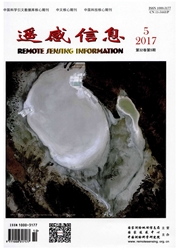

 中文摘要:
中文摘要:
使用2000年到2005年每年8月的中分辨率成像光谱仪(MODIS)的植被指数产品研究了长江上游川江流域加快长江防护林建设以来的植被变化。在选定的特定区域对广泛使用的植被指数NDVI和新开发的增强型植被指数EVI进行了对比分析,两种植被指数在湿润环境下对高密度植被的描述有明显差别:NDVI的季节性不明显,表现为全年高平的曲线;而EVI仍然有季节性,表现为钟形曲线,与月平均温度关系更密切。通过对EVI产品的分析,近6年来长江上游川江流域的植被得到了较好的恢复,尤其是在湖北和嘉陵江附近植被得到了明显的增加,整体上最明显的变化是较高植被值域区(0.6~0.8),所占比例由3.26%增加到13.96%。
 英文摘要:
英文摘要:
This article has used MODIS vegetation index product to study the vegetation change of the Chuanjiang Valley from 2000 to 2005. In the ehosen field, we have taken a abroad comparative analysis to NDVI and EVI, these two vegetation indiees have obvious difference in description of high density vegetation in the moist environment: the seasonal change of NDVI is unconspieuous, the curve of whole year is high and smooth . EVI showing bell-shaped eurve, has seasonal ehange and affinity with the monthly average . Through analysis of EVI produet, we think, that the vegetation of the Chuanjiang Valley has a better recovery, especially nearby the Minjiang Valley and Hubei Provinee . The most obvious ehange is the higher vegetation area (0.6-0.8) and the proportion has inereased from 3.26% to 13.96%. So the vegetation has obviously inereased.
 同期刊论文项目
同期刊论文项目
 同项目期刊论文
同项目期刊论文
 Distributions of raindrop sizes and fall velocities in a semi-arid plateau climate: convective vs. s
Distributions of raindrop sizes and fall velocities in a semi-arid plateau climate: convective vs. s The characteristics of thunderstorm frequency variation and their possible relation with the adjustm
The characteristics of thunderstorm frequency variation and their possible relation with the adjustm 期刊信息
期刊信息
